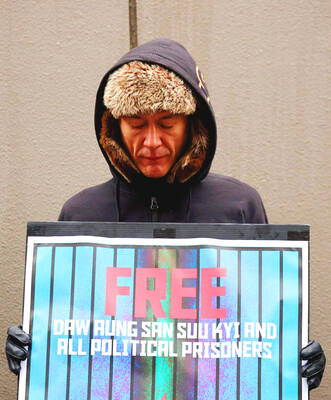Joining a swelling group of countries shooting for the moon, Japan is considering a plan to establish a manned lunar base by 2025, officials said yesterday.
If approved, the mission would mark a major change of direction for Japan's space program, which has for decades focused on unmanned, scientific probes.
It would also up the ante in an increasingly heated space race in Asia. Both China and India have announced moon missions, and US President George W. Bush has proclaimed that the US will return to the moon in the next decade or so and will try to send astronauts to Mars as well.
Masaki Shirakawa, an official with the Cabinet Office, confirmed that the plan was being considered by JAXA, Japan's space agency.
JAXA officials also confirmed the mission was under consideration, but said the plan is still being fleshed out and has yet to be formally accepted. A report outlining the plan is expected to be submitted to the government later this month or early next month.
JAXA has not released details of the plan.
But according to a report on Monday in the Mainichi Shimbun newspaper, JAXA hopes to develop a robot to conduct probes on the moon by 2010, then begin constructing a solar-powered manned research base on the moon and design a reusable manned space vessel like the US space shuttle by 2025.
Long Asia's leading spacefaring nation, Japan has lately been struggling to get out from under the shadow of China, which put its first astronaut into orbit in October 2003.
Beijing has since announced it is aiming to put a man on the moon. India said last year it would send a manned mission to the moon by 2015, but is reconsidering that project because of the high cost. Officials say an unmanned mission is still in the works, however.
Japan's space program has been plagued by failures in recent years.
One month after China's first manned mission, a Japanese H-2A rocket carrying two spy satellites malfunctioned after liftoff, forcing controllers to end its mission in a spectacular fireball.

China yesterday held a low-key memorial ceremony for the 1937 Nanjing Massacre, with Chinese President Xi Jinping (習近平) not attending, despite a diplomatic crisis between Beijing and Tokyo over Taiwan. Beijing has raged at Tokyo since Japanese Prime Minister Sanae Takaichi last month said that a hypothetical Chinese attack on Taiwan could trigger a military response from Japan. China and Japan have long sparred over their painful history. China consistently reminds its people of the 1937 Nanjing Massacre, in which it says Japanese troops killed 300,000 people in what was then its capital. A post-World War II Allied tribunal put the death toll

‘NO AMNESTY’: Tens of thousands of people joined the rally against a bill that would slash the former president’s prison term; President Lula has said he would veto the bill Tens of thousands of Brazilians on Sunday demonstrated against a bill that advanced in Congress this week that would reduce the time former president Jair Bolsonaro spends behind bars following his sentence of more than 27 years for attempting a coup. Protests took place in the capital, Brasilia, and in other major cities across the nation, including Sao Paulo, Florianopolis, Salvador and Recife. On Copacabana’s boardwalk in Rio de Janeiro, crowds composed of left-wing voters chanted “No amnesty” and “Out with Hugo Motta,” a reference to the speaker of the lower house, which approved the bill on Wednesday last week. It is

The Burmese junta has said that detained former leader Aung San Suu Kyi is “in good health,” a day after her son said he has received little information about the 80-year-old’s condition and fears she could die without him knowing. In an interview in Tokyo earlier this week, Kim Aris said he had not heard from his mother in years and believes she is being held incommunicado in the capital, Naypyidaw. Aung San Suu Kyi, a Nobel Peace Prize laureate, was detained after a 2021 military coup that ousted her elected civilian government and sparked a civil war. She is serving a

FALLEN: The nine soldiers who were killed while carrying out combat and engineering tasks in Russia were given the title of Hero of the Democratic People’s Republic of Korea North Korean leader Kim Jong-un attended a welcoming ceremony for an army engineering unit that had returned home after carrying out duties in Russia, North Korean state media KCNA reported on Saturday. In a speech carried by KCNA, Kim praised officers and soldiers of the 528th Regiment of Engineers of the Korean People’s Army (KPA) for “heroic” conduct and “mass heroism” in fulfilling orders issued by the ruling Workers’ Party of Korea during a 120-day overseas deployment. Video footage released by North Korea showed uniformed soldiers disembarking from an aircraft, Kim hugging a soldier seated in a wheelchair, and soldiers and officials